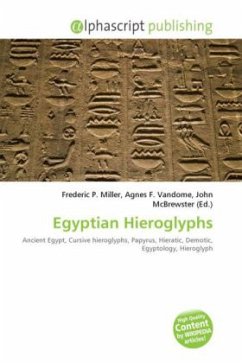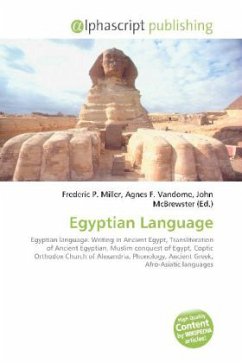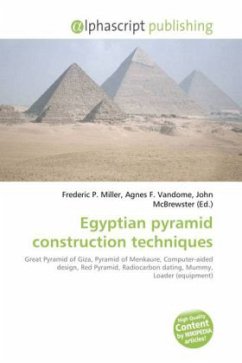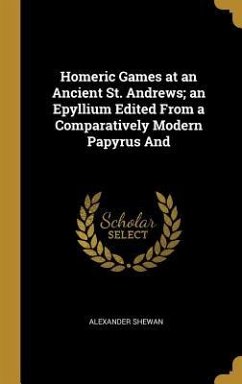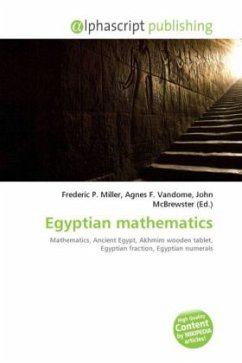
Egyptian mathematics
Versandkostenfrei!
Versandfertig in 6-10 Tagen
30,99 €
inkl. MwSt.

PAYBACK Punkte
15 °P sammeln!
Egyptian mathematics refers to the style and methods of mathematics performed in Ancient Egypt. Egyptian multiplication and division were performed by doubling and halving (respectively) a known number to approach the solution. The method of false position may not have been used for division and algebra problems. Scribes may have only used Old Kingdom binary numbers, and Middle Kingdom unit fractions, written within RMP 2/n table answers. Scribes like Ahmes solved complex mathematical problems, 84 of which are outlined in the Rhind Mathematical Papyrus (RMP), one of which included arithmetic p...
Egyptian mathematics refers to the style and methods of mathematics performed in Ancient Egypt. Egyptian multiplication and division were performed by doubling and halving (respectively) a known number to approach the solution. The method of false position may not have been used for division and algebra problems. Scribes may have only used Old Kingdom binary numbers, and Middle Kingdom unit fractions, written within RMP 2/n table answers. Scribes like Ahmes solved complex mathematical problems, 84 of which are outlined in the Rhind Mathematical Papyrus (RMP), one of which included arithmetic progressions. The traditional Old Kingdom scholars report that Egyptians confined themselves to applications of practical arithmetic with problems additively addressing how a number of loaves can be divided equally between a number of men. Problems in the Moscow and Rhind Mathematical Papyri expressed instructional views. Three views cover abstract definitions of number, and higher forms of arithmetic. Abstract definitions are found in the Akhmim Wooden Tablet, the Egyptian Mathematical Leather Roll and the Rhind Mathematical Papyrus.




